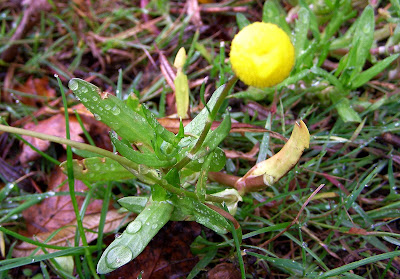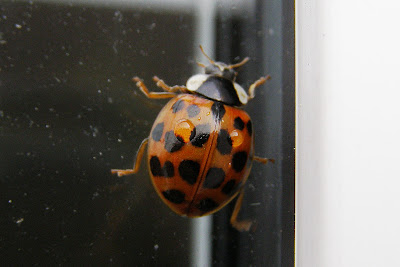There are many species of plants and animals at large in the UK which are non-native. Yesterday, we discovered one growing around the lake at Straw's Bridge. A small, bright-yellow flowered plant, growing in the wet soils by the lake. It took some looking up trying to identify it, but eventually I discovered it is a Buttonweed (Cotula coronopifolia).
A native of south Africa, this plant has spread to many parts of the world and has recently started to colonise the UK, helped in great part, by the birds which spread the seeds. Also called Brass Buttons, the plant is very tolerant of salt conditions and stores water in it's fleshy stems and leaves in order to stave off the worst effects of drought or saline inundation.
Nice to see such a bright flower in bloom at this time of year.
Next, an invader which has been getting much publicity of late. The Harlequin Ladybird (Harmonia axyridis). In this case the variety 'succinea'.
In the warm weather of the past few days, they have been seen flying all over the garden and scurrying up the windows. The most invasive ladybird on the planet, originating in eastern Asia, it was introduced to North America in 1988, where it is now the most widespread ladybird species on the continent. It has already invaded much of northwestern Europe, and arrived in Britain in summer 2004.
Harlequin ladybirds feed mostly on aphids, but also on scale insects, adelgids, the eggs and larvae of butterflies and moths, many other small insects, including other ladybirds, pollen, nectar, and sugary fluids, including honeydew and the juice from ripe fruits. A single female can lay over a thousand eggs!




No comments:
Post a Comment